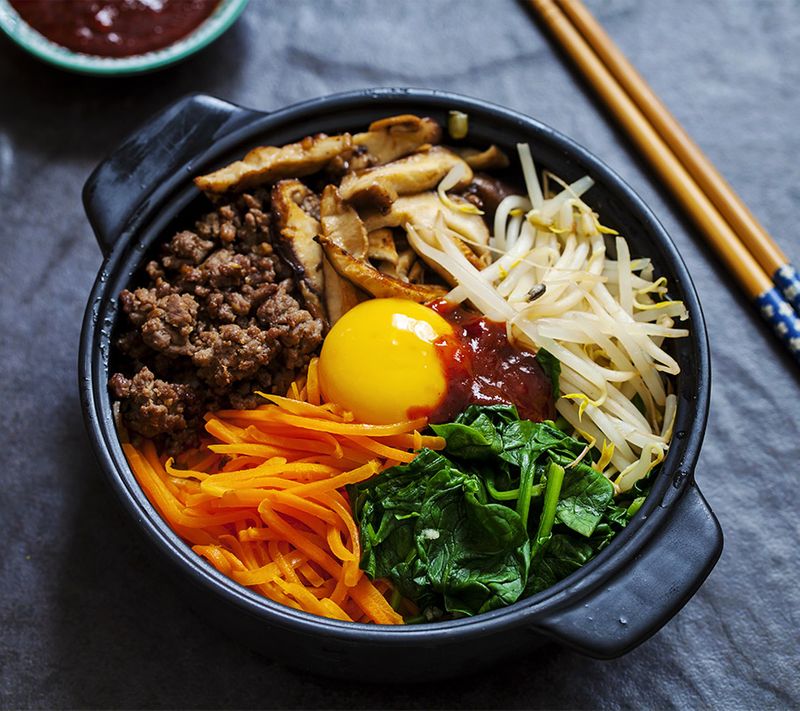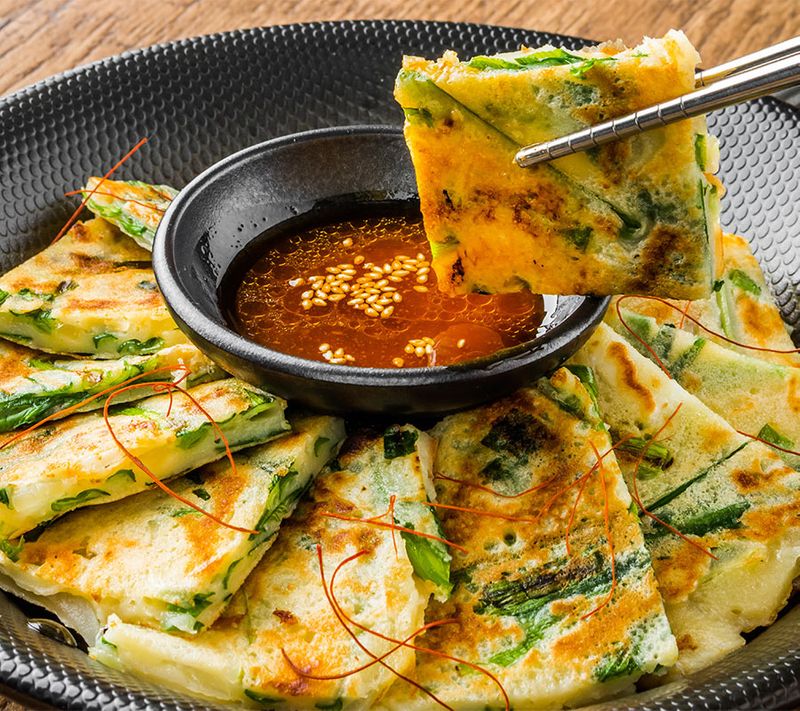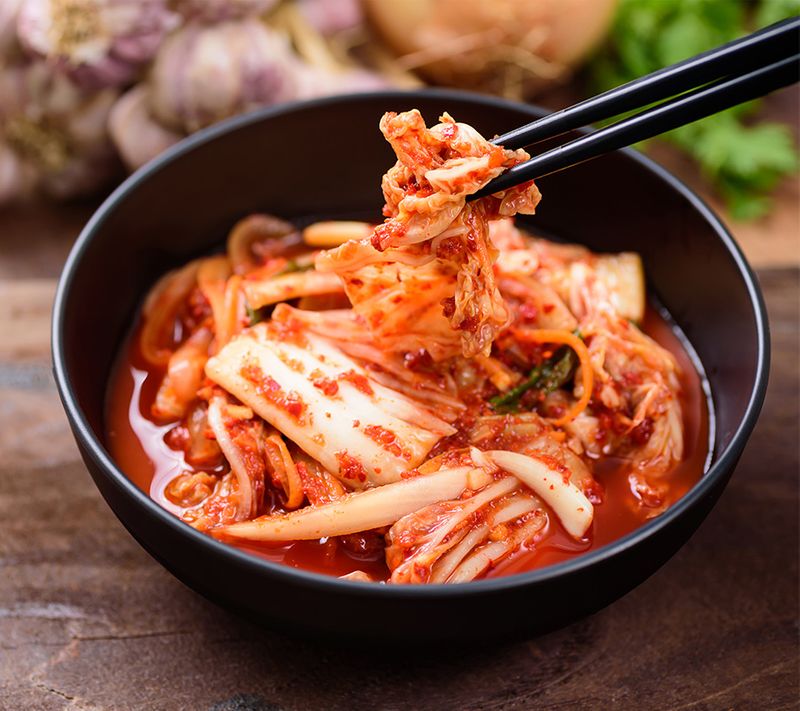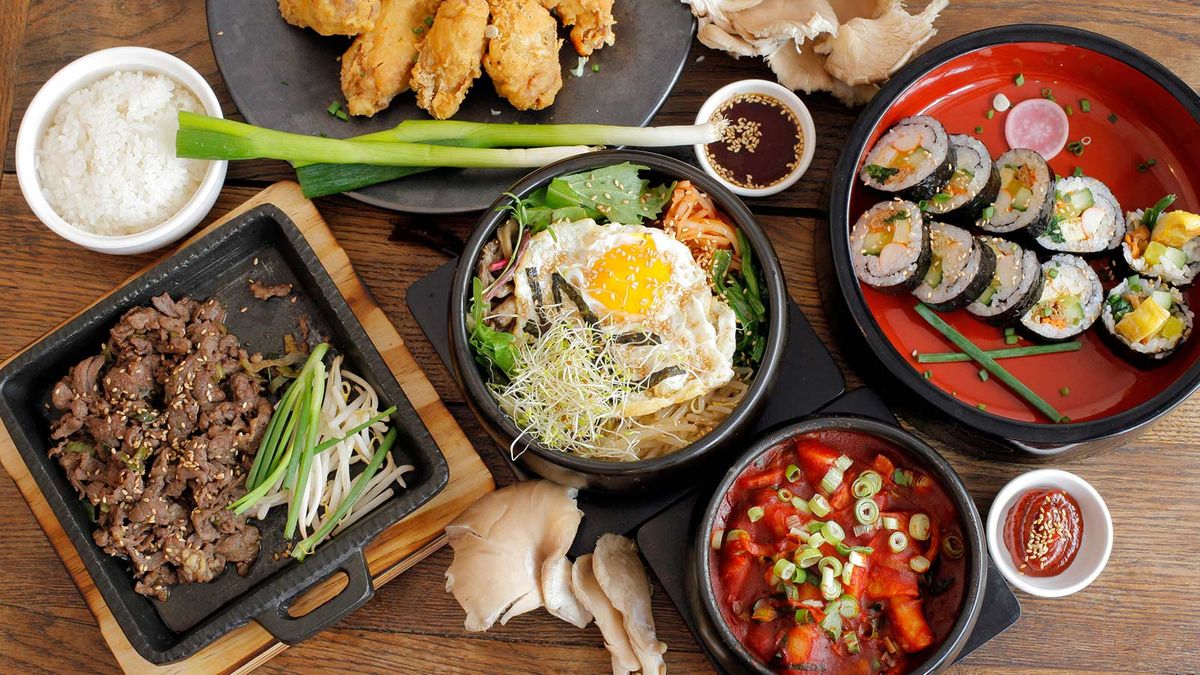For Gurugram-based IT engineer Rohit Tandon and his doctor wife, Niyati, Sundays start with a hearty Korean brunch of jjapchae (Korean pancakes). Like the Tandons, many Indian families boast the Korean spice gochujang (fermented red chilli paste) as a pantry staple. It is often accompanied by a side of kimchi (Korean fermented vegetable pickle made with radish or Napa cabbage) at mealtimes. “It adds that extra zing,” says Niyati.
What is it with the love for Korean food that Indians have developed lately? Food experts credit it to the rising trend of all things Korean—K-dramas, K-pop, and of course, K-fashion. From the start of the pandemic, K-dramas have become a major part of TV viewing in India, not to mention the percolation of K-pop and K-fashion. The viewership of K-dramas and K-pop on Netflix reported a year-over-year 370 percent jump in 2020. “My wife’s love for Korea started with using Korean sheet masks in her beauty regime. For me, it was the healthy serving of K-dramas on Netflix and other streaming platforms that opened the doors to Hallyu,” says Rohit.

As more and more people got hooked on K-dramas, they began getting involved in the serials, heart, soul and… tastebuds. Most of the K-dramas, such as Crash Landing On You, Oh My Ghost, My Lovely Sam Soon and more had the story revolving around the character preparing food, plating it, and eating together. Conversations in the series happen around food. Food serves as an integral part of the storytelling. Then there is the extra helping of Korean food documentaries on Netflix—A Nation of Broth, Korean Cold Noodle Rhapsody, Hanwoo Rhapsody. Needless to say, the viewers are not satisfied with the visual presentation only. They want to experience it all.
Korean cuisine typically consists of rice, meat, a variety of vegetables, a variety of sauces, and spices. Besides, it is also the bright presentation paired with the powerful seasonings that have enthusiasts fascinated. Ashok Bandaru, executive chef, Shangri-La Bengaluru says, “Korean cuisine is well regarded for its robust, vibrant and piquant flavours including an array of unique street food snacks.”
Co-founder and chef of Autumn Leaf Bistro Goa and Hyderabad, Krishna Reddy, says, “The K-wave, spurred by the soaring popularity of K-pop, K-dramas, and films incorporating Korean food and snacks, is definitely sweeping the culinary industry. My absolute favourite is Dolsot Bibimbap, a traditional Korean rice dish prepared with a variety of vegetable and meat toppings and served sizzling hot in a stone pot. Because of the stone pot, the fantastically browned scorched rice in the bottom of the dish makes it even more delicious.”
For Indians, the similarity between Korean and Indian cuisines draws them in. The flavour profile connects the two nations. Like Indians, Koreans also stress carbs. Each meal is ideally accompanied by rice—a Korean staple—or, at least noodles. Then there is the spice factor. Like the fiery gochujang paste and its dried version, gochugaru, there is the typical Indian love for all things hot and spicy, in the form of red and green chillies. This spiciness, as Niyati says, adds a zing to the dishes. It sits perfectly with both the Korean and Indian palates.

And it’s not just the spice factor. Look closely, and you will see how Koreans love their broth and usually consume it mixed with rice. While their broth may be largely non-vegetarian with meat and seafood thrown in, Indians too have their own version of a hot steaming bowl of comfort in the basic dal that accompanies most meals and is had with rice. Just like for the Koreans no meal is complete without a steaming bowl of broth, for the Indian palate too comfort lies in a bowl of homemade dal, fresh off the stove.
Besides the carbs, spice and broth connect, is the shared love for fermented foods. While Koreans ferment Napa cabbage and radish to make their most important meal side, kimchi, Indians just about ferment anything to come up with tantalising achaars or pickles. Each region in India has its own recipe for achaars. Though the Korean fermented bean paste of doenjang is a far cry from our pickles, the basic principle is the same. Also, like India, Korean cuisine is also region-specific. Like us, they enjoy a multitude of side dishes and the cuisine changes with every few miles. So, while the places near the sea boast their love for seafood in their cuisine, the areas inwards make do with food foraged and grown on the land. The same concept holds true for Indian tastebuds when you travel from the beaches to the mainland.

And Korean food, like traditional Indian cuisine, also has a host of health benefits. Gagandeep Bedi, executive chef, Roseate House New Delhi, says, “Korean food is certainly in trend majorly because of health benefits involved. It is high in fibre and low in calories majorly due to the use of a lot of vegetables and minimal use of trans fats. Moreover, the food is extremely good for gut health due to the use of traditional methods of fermentation and pickling.”
Little wonder that Korean is all things alluring and trending right now. The import of Korean noodles in India witnessed a volume growth of 162 percent in 2020. Sites such as BeChef, Korikart, Amazon, Master Chow and more are stocking Korean cuisine staples, making the food more accessible for Indians. There is also the added advantage of a growing Korean diaspora—especially in Chennai and Bengaluru—thanks to the booming auto sector.
People like the Tandons have started seeking a real taste of Korean culture. And with that, Korean cuisine has rapidly started gaining traction in Indian restaurants and homes. Many like chef and cookbook author Anahita Dhondy are sharing their love for Korean cuisine on their Instagram page. With easy tutorials, YouTube influencers like Maangchi are making it a little bit easier for Indians to take to Korean cooking in their kitchens. So, what’s stopping you?
5 Places in Delhi-NCR to get Your Korean FixGung The PalaceGurgaon, Delhi & Noida Must try: Wang Galbi, Samgyeopsal, Dak Bulgogi Busan Korean RestaurantHouse 9B, Block 10, New Aruna Nagar, Majnu Ka Tila, Delhi Must try: Soegogi Doenjang Jjigae, Bulgogi Tukbap, Kimchi Jeon Hahn’s KitchenOne Horizon Centre, Golf Course Road, Gurgaon Must try: Spicy Grilled Pork Belly, Short Ribs, Kimchi Stew, Knee Clear Stew, Spicy Korean Chinese Hotpot DalgrakA25, Korean Culture Centre, Ring Road, Lajpat Nagar IV, Delhi Must try: Tteokbokki, Gimbap, Bibimbap Seoul RestaurantAnsal Plaza, Khel Gaon Marg, Delhi Must try: Boiled Black Goat, Grilled Duck with veggies and rice, Sundae Bokkeum |


